Explore Castillo de San Marcos
The Castillo de San Marcos National Monument is one of the most prominent tourist attractions in town and one of the most historically significant. The massive fort sitting on Matanzas Bay in downtown St. Augustine is the oldest masonry fortification in the United States.
The defense structure took the Spanish 23 years to build, from 1672 to 1695. They used native beach stone, called coquina, to construct thick fireproof and impenetrable walls that were able to withstand multiple attacks from British troops, including the massive fire in 1702 that wiped out the rest of the city.
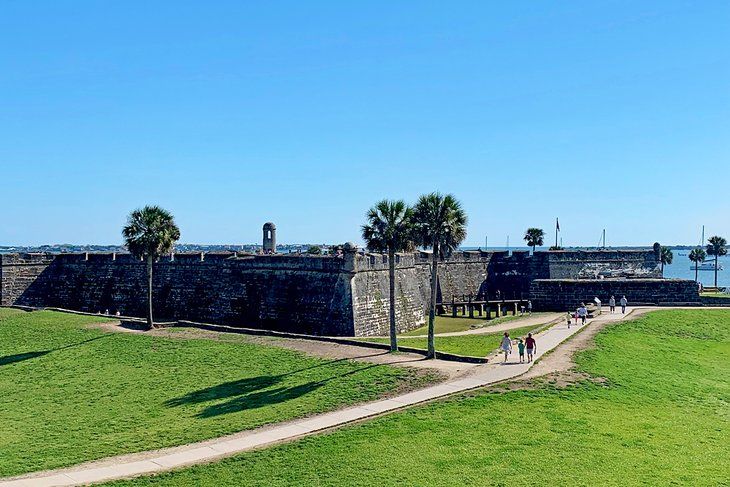
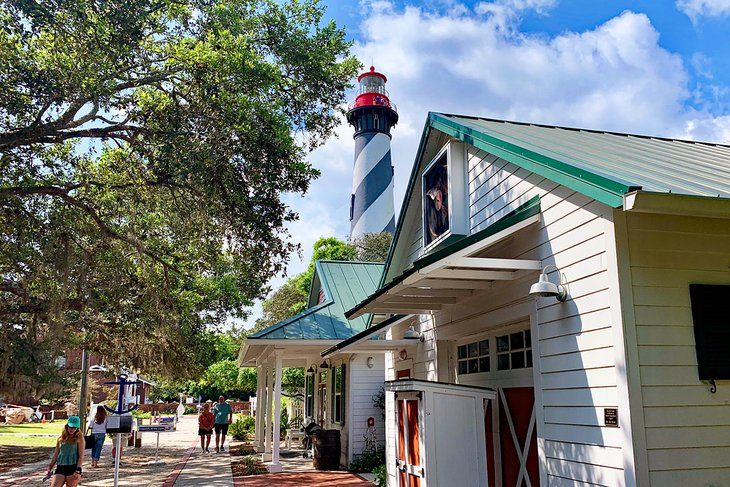
St. Augustine Lighthouse & Maritime Museum
The tall spiral-striped lighthouse is St. Augustine's oldest standing brick structure, built in 1871-1874 to replace the original wooden watchtower. During World War II, the Coast Guard used it to keep watch over the shore, and it is considered the first permanent navigational aid in North America.
After being vandalized, the lighthouse and its original Fresnel lens, made of 370 glass prisms cut by hand, were restored, and the museum's proceeds make its upkeep possible. Atop the 219 steps, standing at 165 feet above sea level, the beacon light is still in operation and uses the original beehive-shaped prism, which stands at 12 feet tall and 6 feet in diameter.
The site is also home to one of the only field schools for underwater archaeology. Students of all ages come here to learn by exploring an actual shipwreck in the water below.
Fort Matanzas National Monument
Fort Matanzas National Monument is one of the most important historical structures in St. Augustine. It was constructed in 1740-42 by Spanish settlers in an attempt to fend off British ships approaching the vulnerable Matanzas Inlet. The fort and tower are made from local coquina shells and a pine foundation, giving it stability in the marshy ground below it.
This is one of the best free things to do in St. Augustine, and you can easily spend several hours at the site. A nature trail accessible from the visitor center parking lot winds through the park and forest that surrounds the oldest section of the barrier island.
Take a ride on the ferry to see Fort Matanzas up close and learn about Rattlesnake Island. There are several scheduled trips each day.
The living history park often features reenactments and musket demonstrations for visitors to learn about colonial life and the soldiers of the 18th century.
Just across the street, you can access the beach for swimming and relaxing by the ocean.
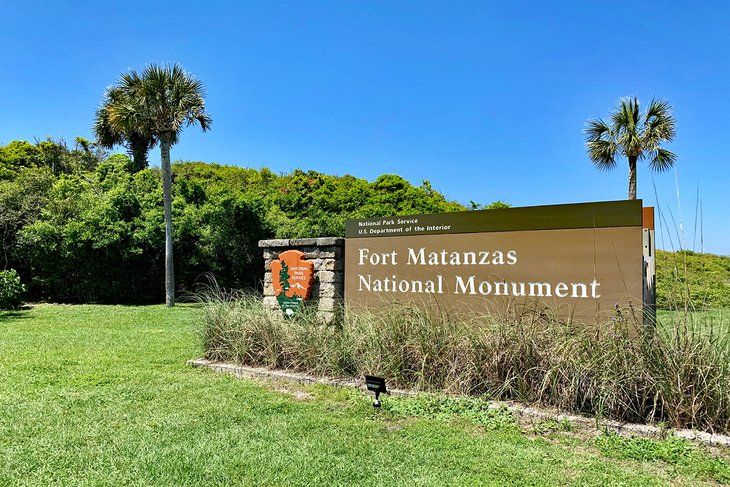
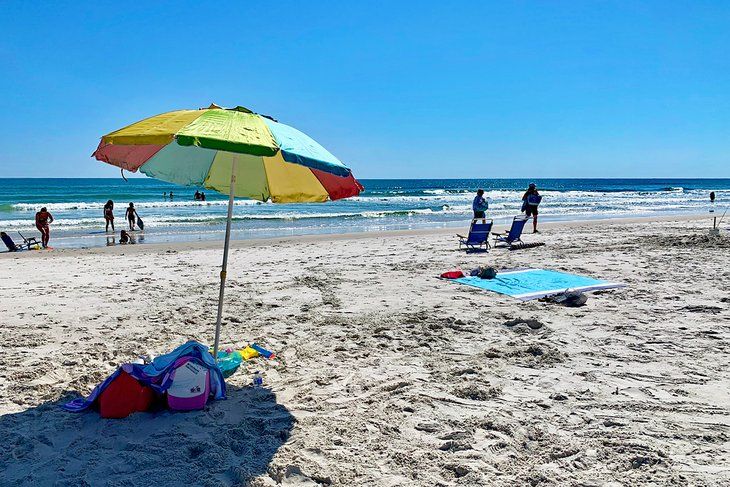
Go to the Beach
St. Augustine's 42 miles of beautiful beaches are an irresistible draw for tourists, whether it's to bask in the Florida sunshine, revel in the lively surf, or explore the natural wonders and wildlife of the shore and tidal wetlands. You'll find waters perfect for surfing, fishing, kayaking, sailing, and boogie boarding, and plenty of beachside facilities.
One of the most popular places to visit is the 1,600-acre Anastasia State Park across Matanzas Bay from downtown St. Augustine. In addition to miles of beach, you'll find the Old Spanish Coquina Quarries, where the coquina stone used to build Castillo de San Marcos, listed on the National Register of Historic Places, was mined.
Some of the other unique beaches to experience in St. Augustine are the GTM Beach at the Guana Tolomato Matanzas National Estuarine Research Reserve, which is a protected area with lots of stunning natural scenery, and Ponte Vedra Beach, where you can find fossilized sharks' teeth in the sand.
St. Augustine Alligator Farm Zoological Park
Visiting the St. Augustine Alligator Farm Zoological Park is one of the most exciting things to do in St. Augustine with kids – including teenagers – and is always a big hit with the whole family.
The park prides itself in being the only one of its kind with all living crocodile species in residence. Alligator Lagoon, Oasis on the Nile, and the Land of Crocodiles are some of the best areas of the park to view a variety of young and old alligator and crocodile species.
The most famous resident in the park is Maximo, an Australian saltwater crocodile weighing in at 1,250 pounds. You can view Maximo from above the water and below in an underwater viewing area to get a better look at his over 15-foot body.
The park is also home to a variety of other animals, including exotic birds, several types of snakes, and five species of monkeys. Visitors can see the animals in their habitats and also enjoy a variety of wildlife shows, which provide entertaining and fascinating background on the animals and their care.
One of the most exciting areas to experience, especially for photographers in the spring, is the bird rookery, where you can observe many nesting species. Get up close to the activity from the boardwalk to watch snowy egrets, roseate spoonbills, tricolored herons, white ibis, and other species build their nests. You can also observe the chicks hatching.
More adventurous tourists will love the park's zipline course, which spans several of the habitats, from alligators to tropical birds.
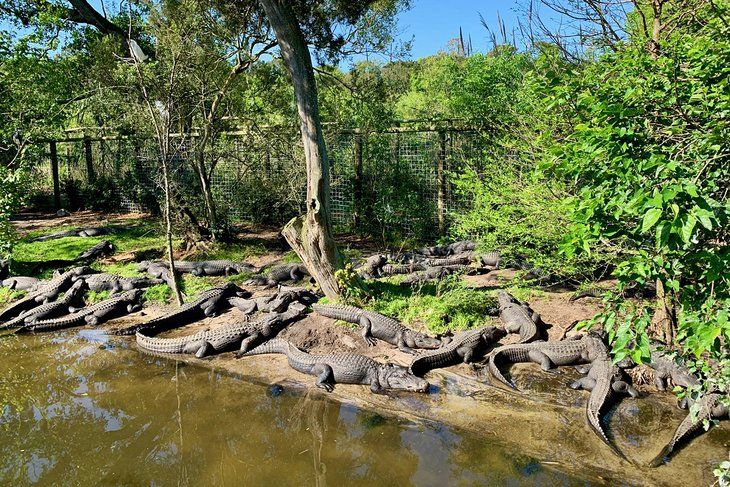
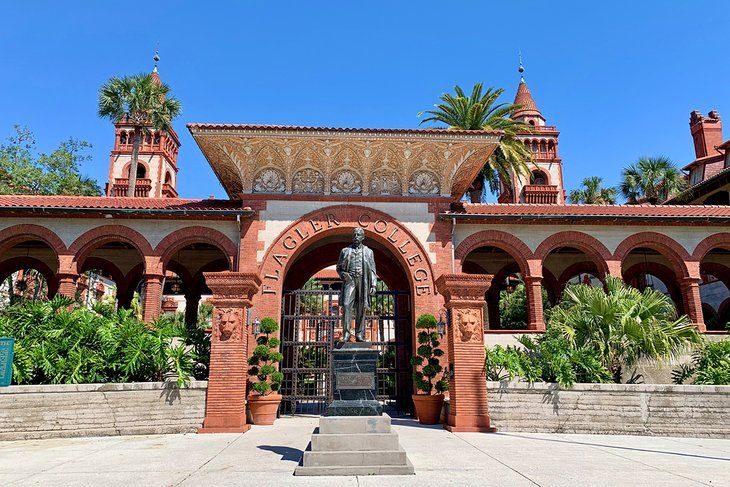
Tour Flagler College
St. Augustine is a pedestrian-friendly city with sidewalks and crosswalks, making it easy to get around, especially around Flagler College. The campus is a great place to take a stroll to soak in the stunning landscaping and historic buildings.
The centerpiece of the campus is Ponce de Leon Hall. In 1888, Henry Flagler built the Spanish Renaissance structure as the Hotel Ponce de Leon, one of several resorts he built in Florida. The building is now a National Historic Landmark and one of the most stunning pieces of architecture in the city.
You can take a Historic Tour of Flagler College with the purchase of a ticket. There are two tours per day, where you will learn behind-the-scenes details about Henry Flagler and his contributions to St. Augustine, and see intricately restored details in the historic hotel, like the dining room that is decorated with 79 Tiffany stained-glass windows.
Lightner Museum
One of the country's best collections of 19th-century decorative and fine arts is displayed in the four floors of the former Alcazar Hotel built in 1888 by Henry Flagler. The collections are eccentric, and although they include Tiffany glass, fine furniture and porcelains, sculpture, and paintings, they also include shrunken heads, mechanical musical instruments, a mummy, cigar labels, and curiosities such as human hair art.
Flagler's hotel was the marvel of its era, the 1890s, filled with fashionable guests who danced in its grand ballroom and swam in the world's largest indoor swimming pool. Outside the museum, walk the beautiful manicured gardens and courtyard with a koi pond, which are excellent locations for photos.
After you explore Lightner Museum, have lunch at the elegant Alcazar Café located inside the old indoor swimming pool. Enjoy homemade fare in the bistro-style café accompanied by live music in an unforgettable setting.
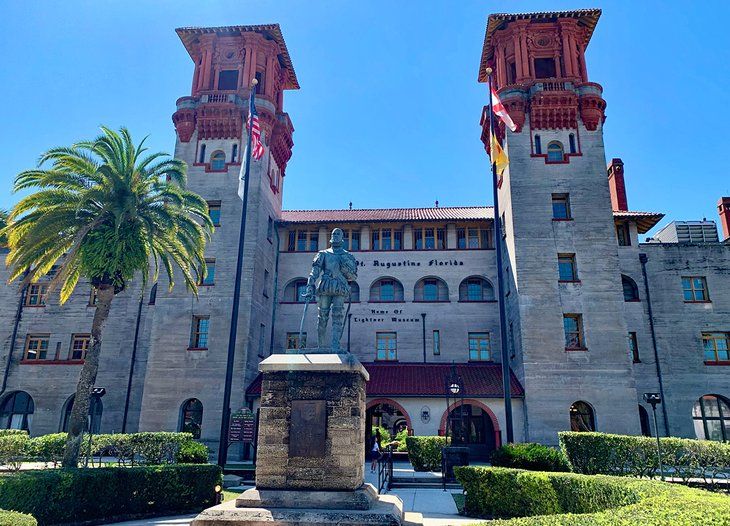
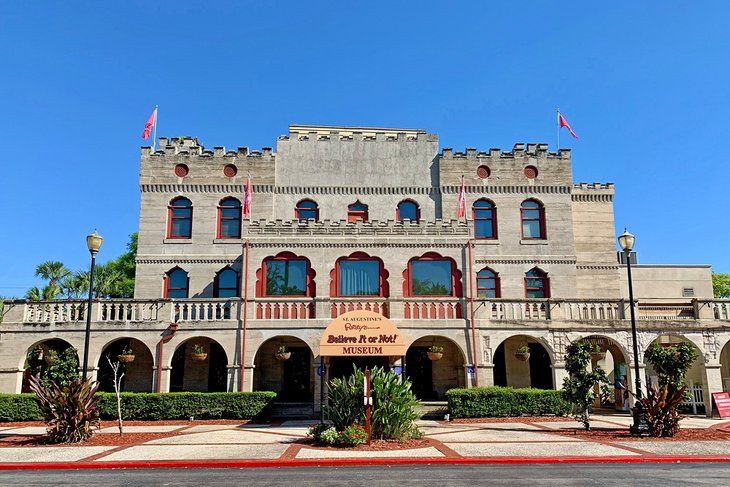
Ripley's Believe It or Not Museum
The former Castle Warden Hotel, in the historic district, now houses 800 exhibits of Robert Ripley's collection of curiosities. Since 1950, the "Odditorium" has mystified, shocked, and amused guests with its eclectic displays of the strange and unusual.
Here, you will find anything from historical artifacts to the bizarre and grotesque, including real shrunken heads and a motorcycle made of actual bones. The "Space Oddities" gallery displays items as small as a set of crayons carved into Star Wars characters and as big as a giant replica of the international space station made entirely of matchsticks.
If all this isn't strange enough, keep an eye or ear out for the ghosts of two women who purportedly died in a fire while staying at the hotel. Ripley's also operates the Red Train Tours, guided open-air tours to visit the city's major sites.
Sail aboard the Schooner Freedom
A sunset sail on board the Schooner Freedom is one of the best ways to see St. Augustine and experience the city from the water. Besides feeling the ocean breeze on your face as you quietly sail through the water, you will enjoy seeing the marine life, including dolphins and sea birds on the trip.
A sail on the Schooner Freedom is unique because it is a replica of a 19th-century blockade runner, built to exact specifications. It is a 76-foot-long, double-masted, topsail schooner.
You can relax on board as you watch the crew expertly handle the intricacies of this stunning boat. While a rare occurrence, if the winds are just right, you might just be able to sail to the mouth of the open ocean.
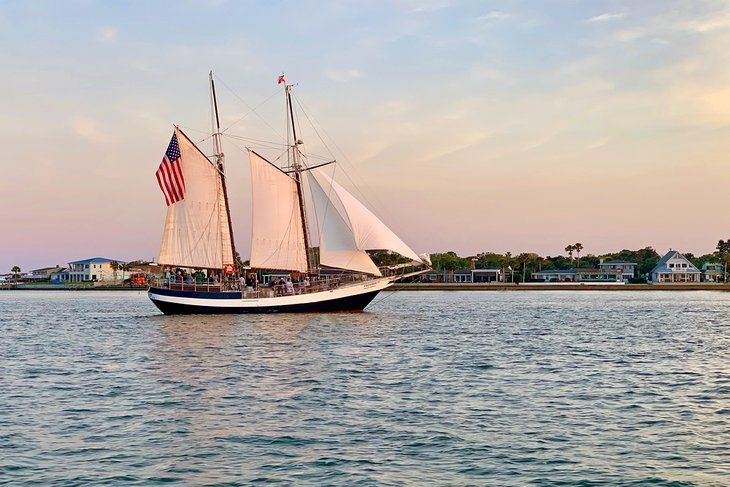
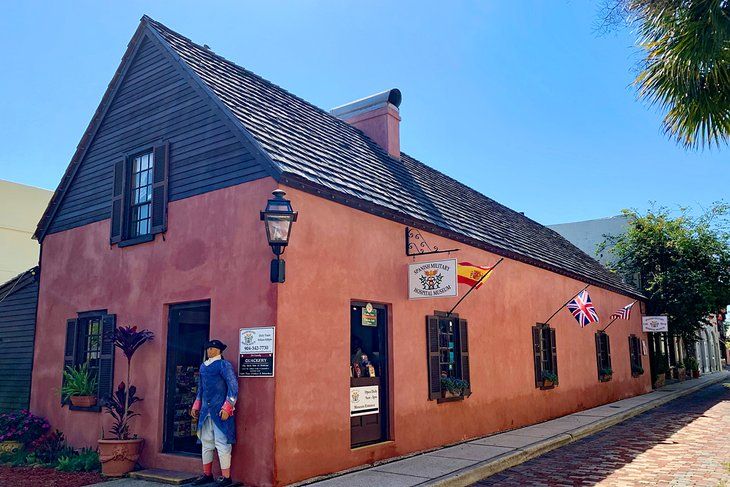
Spanish Military Hospital Museum
The Spanish Military Hospital Museum is located on Avilles Street, the oldest street in the United States. The original structure was built during the Spanish Colonial period, and the authentically reconstructed building is on the same site, re-creating the hospital as it would have been in 1791.
Guided tours introduce visitors to displays of antique medical equipment and surgical instruments, and one lucky guest from each group gets to be the "patient" in a demonstration of surgical procedures. There is also a garden and apothecary, where visitors learn about traditional medicines and the herbal origins of modern medications.
